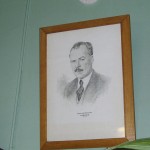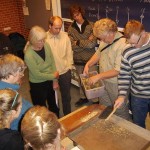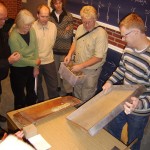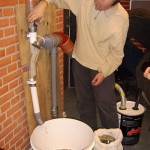In 1939 Winston Churchill said “Russia is a riddle, wrapped in a mystery, inside an enigma” and coincidently a short time before we entered the country there was a magazine title story that was called something like, “Russia — Understanding the Enigma” sitting in the window of a German book store. More than 65 years later Churchill’s description is still applicable.
Most of us have some sort of preconceived notions about Russia, and we must admit that we had ours. Our stay in Saint Petersburg was really only enough to add to those a priori assumptions, and as with most countries (and most things in general), we left feeling like we had learned just enough to realize that we haven’t a clue about the country, let alone the city that we called home for eight days.
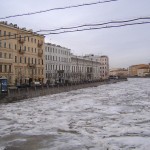
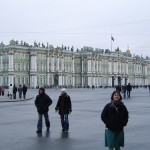
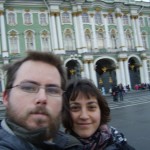
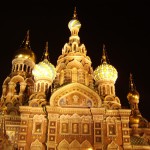
Photos from right to left: Frozen crust on the River Moyka, The Hermitage, The first tourist pose in a long time, The “Church on Spilled Blood” used as a root cellar but the Soviets.
Our interest in visiting Russia was inspired by the renowned Vavilov Institute (VIR), which is known for housing one of the world’s largest and oldest gene banks. In planning our trip to Europe, the VIR was at the top of the list of places we wanted to go, and after more than a little effort, Nick was able to secure an invitation for us.
We had the unique circumstance of arranging a visit to Russia that bridged the first two weeks of the New Year, with an arrival of January 4 and a departure of January 12. In arranging our trip, Sergey Alexanian, a Vice Director and the Foreign Relations specialist at the Vavilov Institute, had mentioned “the holidays,” but I assumed he was referring only to the couple of days on either side of the weekend of January 6-7, the Eastern Orthodox Christmas. Like with many assumptions, I was very wrong.
